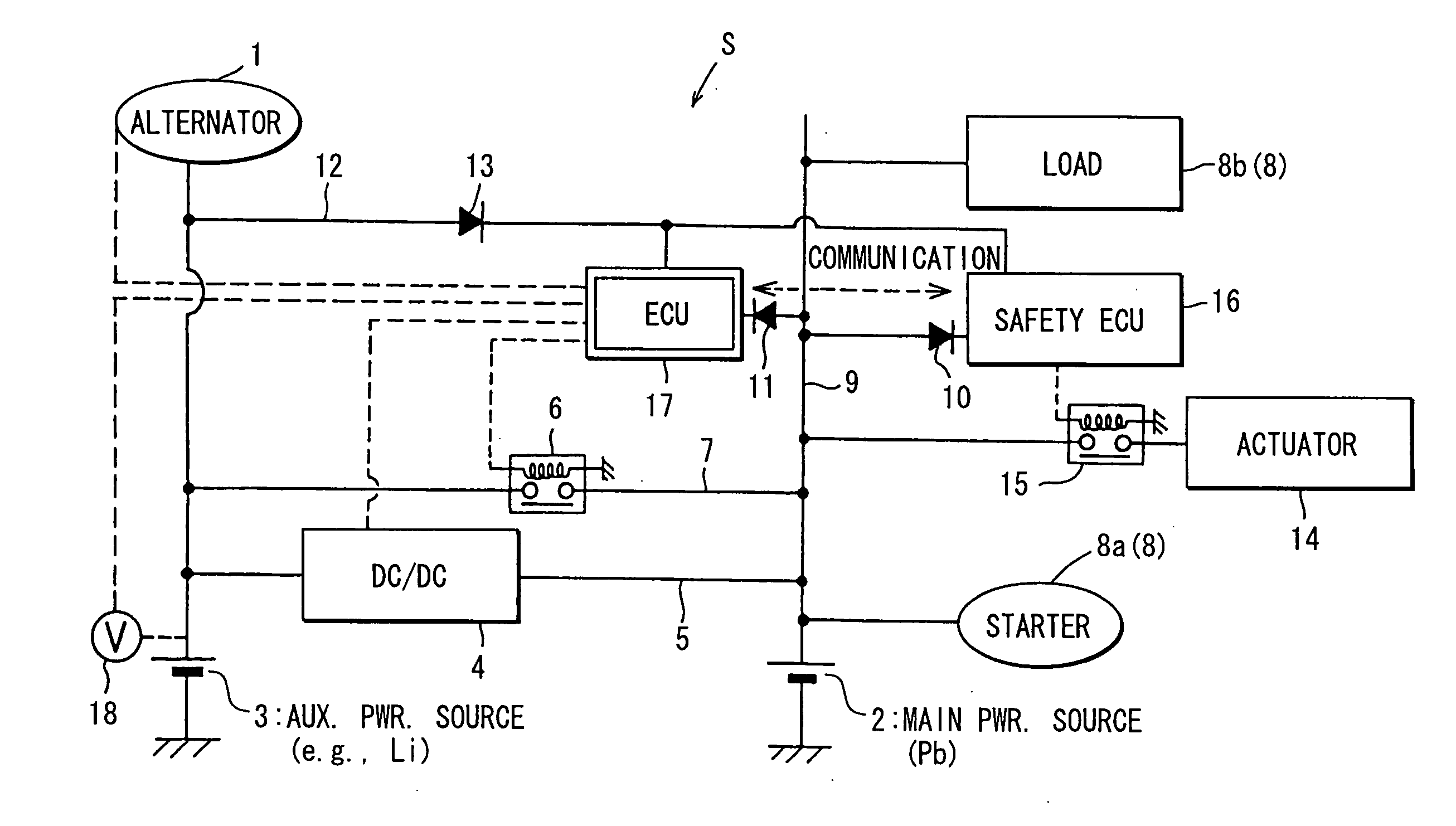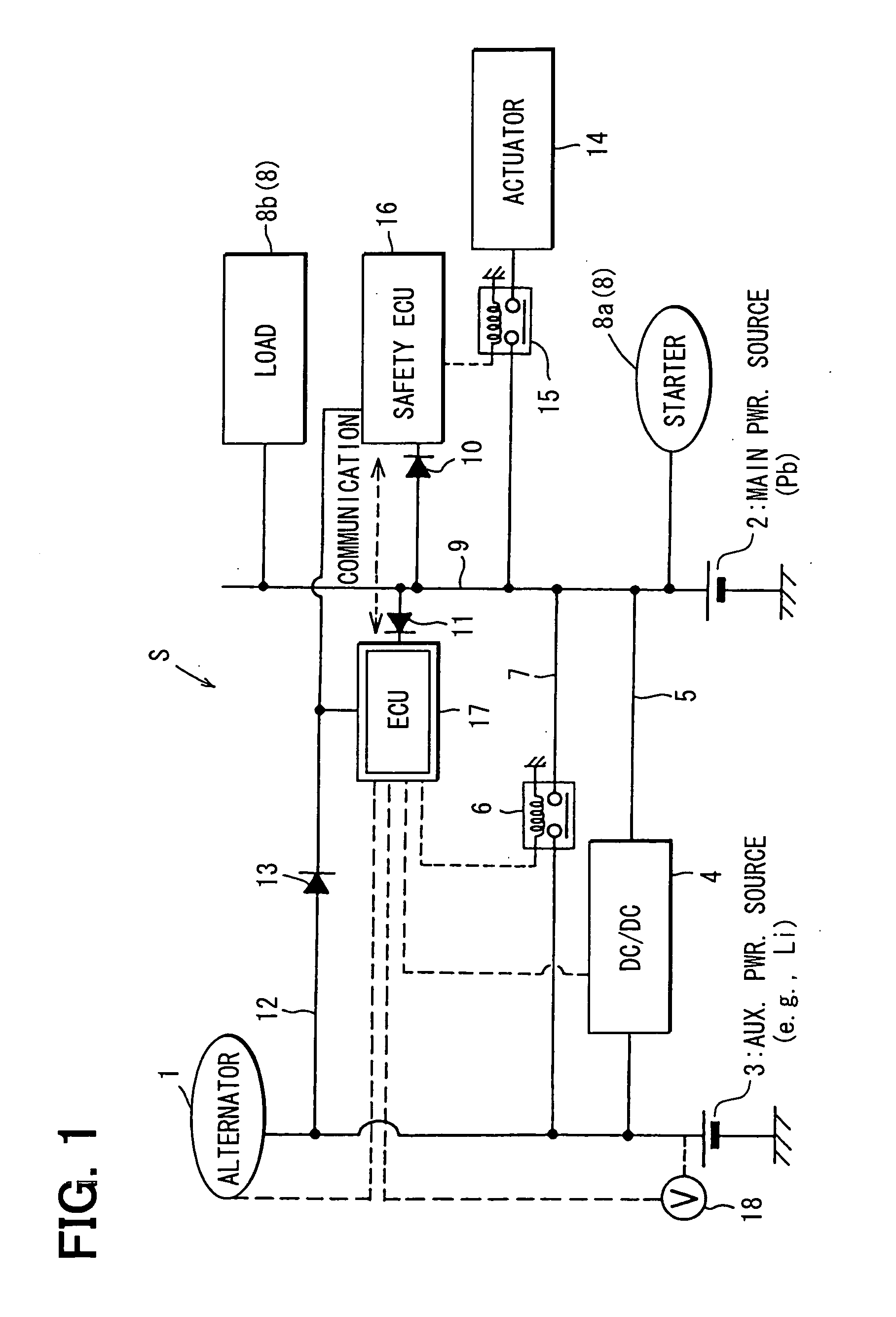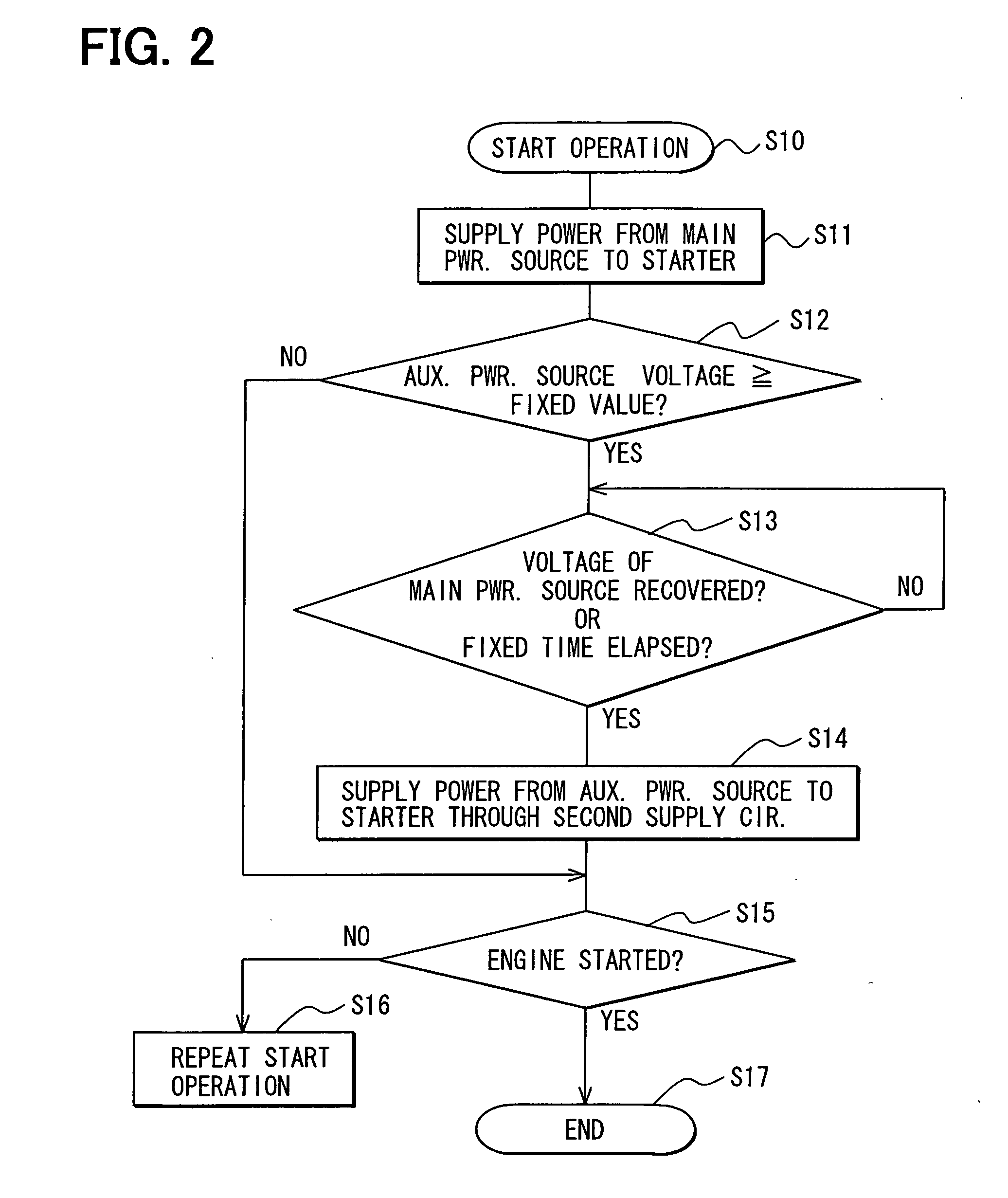Vehicle power supply system
a power supply system and vehicle technology, applied in the direction of machines/engines, electric devices, process and machine control, etc., can solve the problems of reducing power supply efficiency, reducing recovery efficiency, deteriorating fuel consumption, etc., and achieve simple circuit construction of the system, ensure voltage to the important electrical load, and simplify the effect of circuit construction
- Summary
- Abstract
- Description
- Claims
- Application Information
AI Technical Summary
Benefits of technology
Problems solved by technology
Method used
Image
Examples
first embodiment
[0118]FIG. 1 is an electrical circuit diagram of a power supply system (hereinafter, referred to as a power supply system S) for an automotive vehicle according to a first embodiment. FIG. 2 is a flowchart showing a control procedure for starting an engine.
[0119] The power supply system S includes a generator 1 and two power sources (a main power source 2 and an auxiliary power source 3) and supplies electric power to electrical loads (described below) mounted on the vehicle. The generator 1 is driven by the engine (not shown).
[0120] The generator 1 is an alternator, which has an IC regulator. The generator 1 is driven by the engine through a drive belt and generates a voltage of, for example, 13 to 14 V. The generator 1 is connected directly to the auxiliary power source (sub-power source) 3 and is also connected to the main power source 2 through a power supply circuit described below.
[0121] The power supply circuit includes a first supply circuit 5 and a second supply circuit ...
second embodiment
[0137] Next, as a second embodiment, a power supply control operation for controlling supply of power from the generator 1 or the auxiliary power source 3 to the main power source 2 will be described with reference to a flowchart shown in FIG. 4. This is a method in which the charge level of the auxiliary power source 3 is sensed and is used for the power supply control operation.
[0138] At step 20, it is determined whether the output capability of the DC / DC converter 4 is greater than the total power consumption of all of the electrical loads (this will be called as an overall load value), and the charge capacity per unit time of the auxiliary power source 3 is greater than the overall load value. When the determination result is YES, control proceeds to step 21. In contrast, when the determination result is NO, control proceeds to step 22. At step 21, since there is the surplus in the charge capacity of the auxiliary power source 3 with respect to the overall load value, and there...
third embodiment
[0148] Next, as a third embodiment, a control operation of the generator 1 will be described with reference to a flowchart shown in FIG. 5. In this method, the control operation is carried out based on the power source voltages only without using a sensing means of an SOC.
[0149] At step 40, it is determined whether the output voltage V1 of the auxiliary power source 3 is equal to or above a fixed value (e.g., 12 V). When the determination result is YES, control proceeds to step 41. In contrast, when the determination result is NO, control proceeds to step 42. At step 41, since there is the surplus in the charge capacity of the auxiliary power source 3, power generation by the generator 1 is cut off, and electric power is supplied from the auxiliary power source 3 to the main power source 2 through the first supply circuit 5 (the DC / DC converter 4) (first control state).
[0150] At step 42, it is determined whether the vehicle is decelerating, and furthermore the output voltage V1 of...
PUM
 Login to View More
Login to View More Abstract
Description
Claims
Application Information
 Login to View More
Login to View More - R&D
- Intellectual Property
- Life Sciences
- Materials
- Tech Scout
- Unparalleled Data Quality
- Higher Quality Content
- 60% Fewer Hallucinations
Browse by: Latest US Patents, China's latest patents, Technical Efficacy Thesaurus, Application Domain, Technology Topic, Popular Technical Reports.
© 2025 PatSnap. All rights reserved.Legal|Privacy policy|Modern Slavery Act Transparency Statement|Sitemap|About US| Contact US: help@patsnap.com



